38+ Sample Employee Disciplinary Action Forms
-
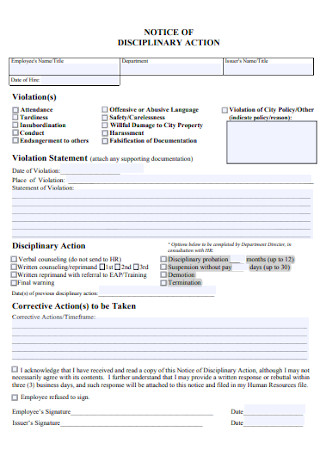
Notice of Employee Disciplinary Action Form
download now -
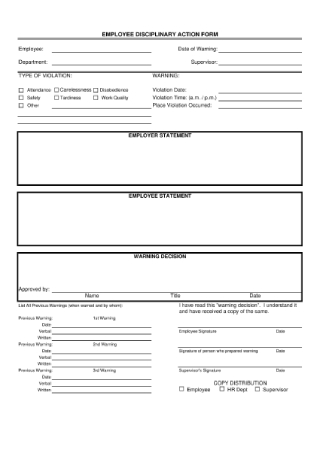
Sample Employee Disciplinary Action Form
download now -
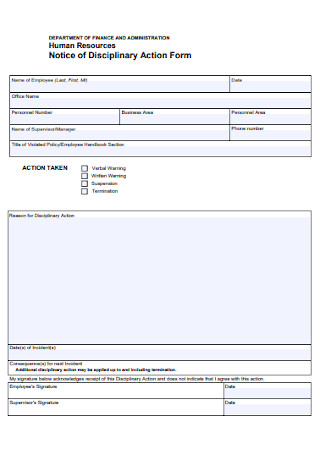
Notice of HR Disciplinary Action Form
download now -
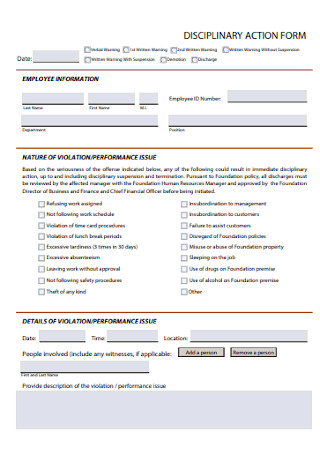
Foundation Employee Disciplinary Action Form
download now -
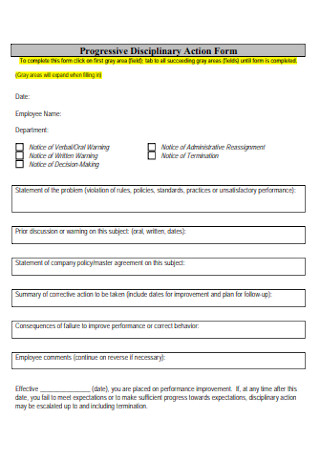
Employee Progressive Disciplinary Action Form
download now -
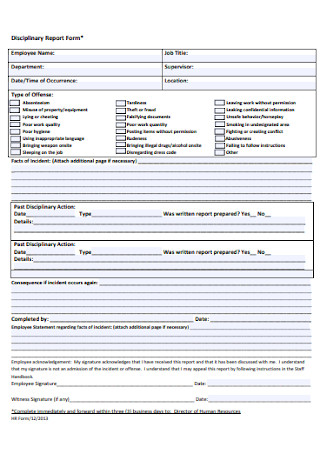
Employee Disciplinary Report Form
download now -
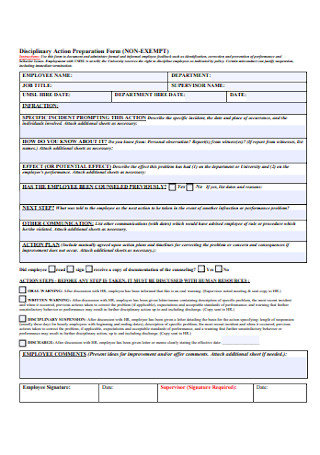
Employee Disciplinary Action Preparation Form
download now -
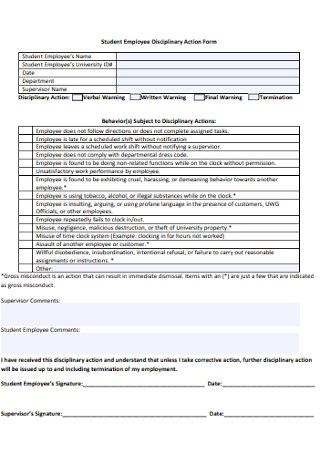
Student Employee Disciplinary Action Form
download now -
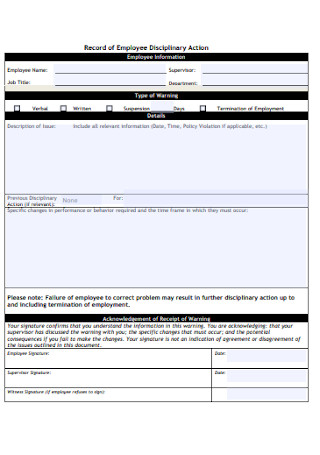
Record of Employee Disciplinary Action Form
download now -
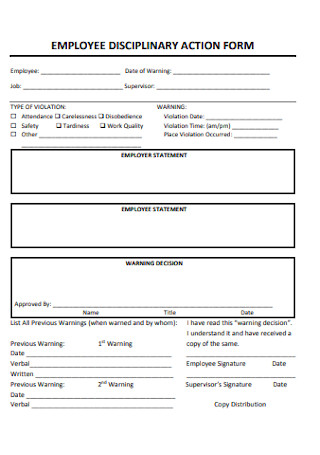
Corporate Employee Disciplinary Action Form
download now -
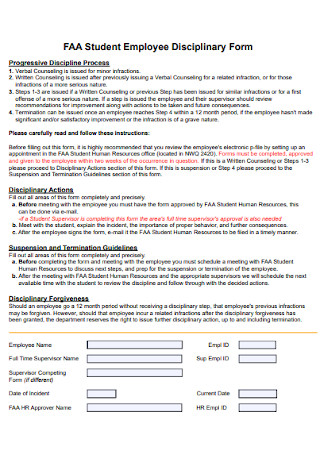
Student Employee Disciplinary Action Form
download now -
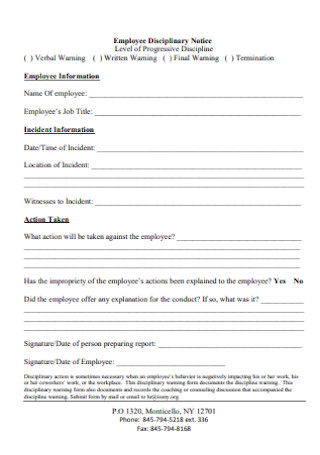
Employee Disciplinary Notice Action Form
download now -
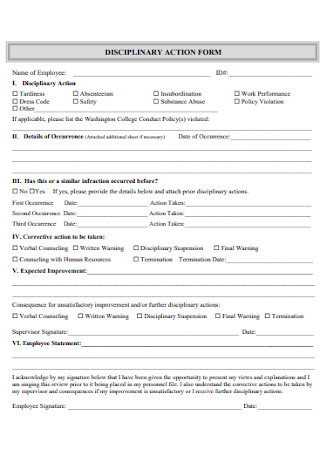
College Employee Disciplinary Action Form
download now -
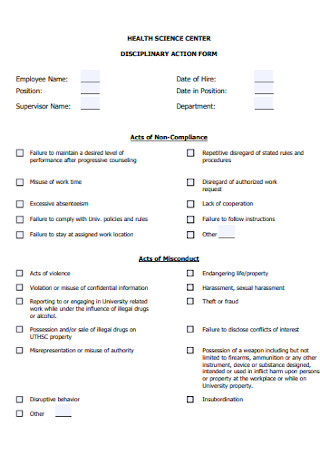
Science Employee Disciplinary Action Form
download now -
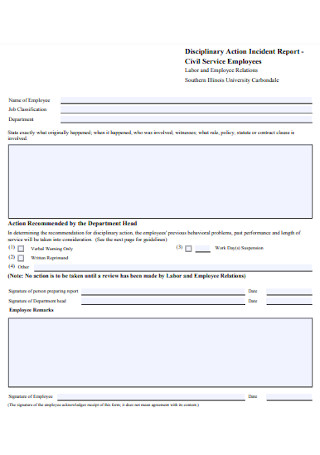
Employee Disciplinary Action Incident Report Form
download now -
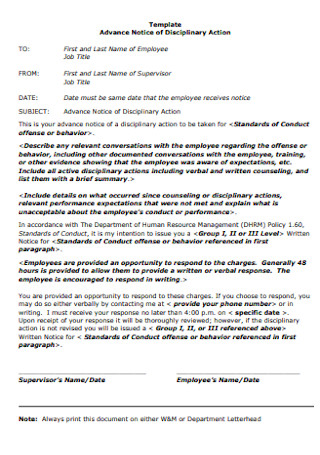
Advance Notice of Disciplinary Action Form
download now -
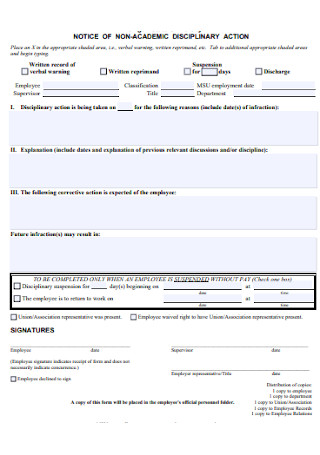
Non-Academic Employee Disciplinary Action Form
download now -
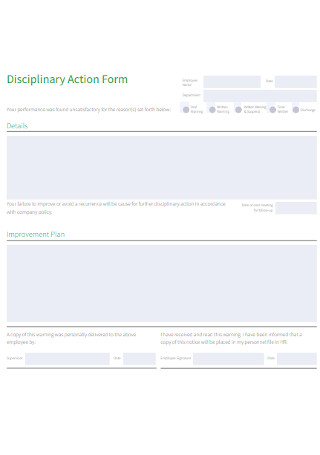
Employee Disciplinary Action Form Format
download now -
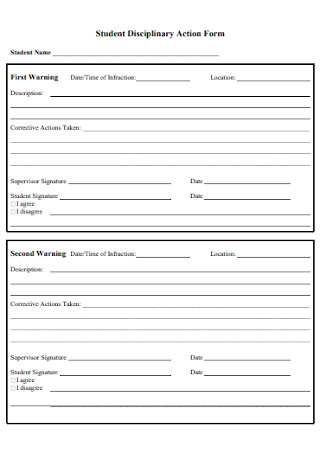
Employee and Student Disciplinary Action Form
download now -
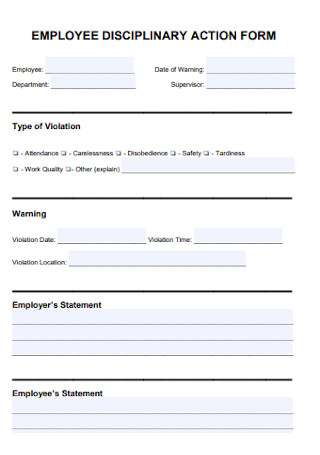
Employee Disciplinary Warning Action Form
download now -
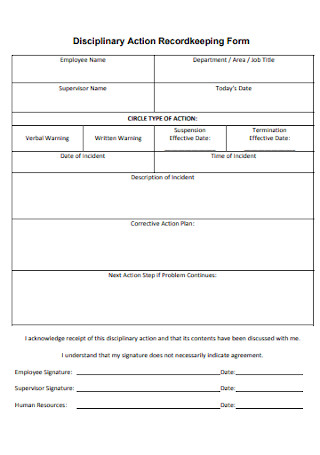
Employee Disciplinary Action Recordkeeping Form
download now -
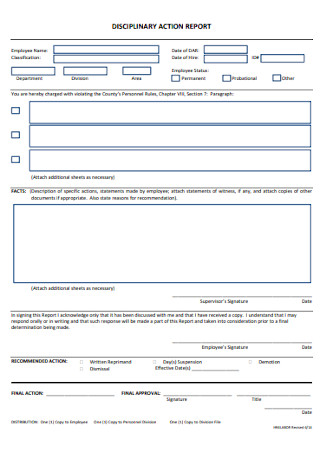
Employee Disciplinary Action Report Form
download now -
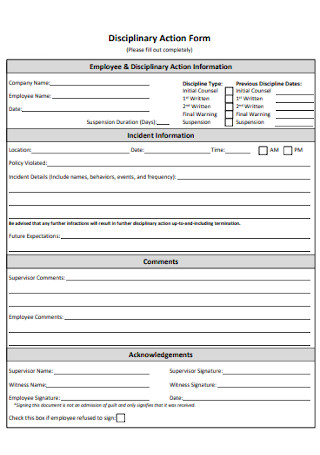
Employee and Disciplinary Action Information Form
download now -
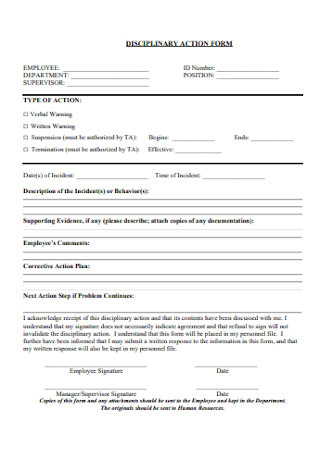
Basic Employee Disciplinary Action Form
download now -
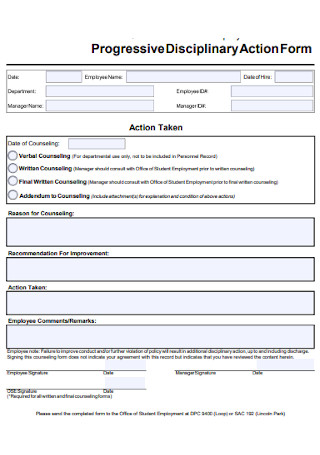
Office Employee Disciplinary Action Form
download now -
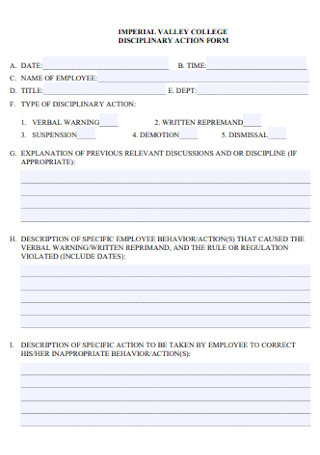
University Employee Disciplinary Action Form
download now -

Simple Employee Disciplinary Action Form
download now -
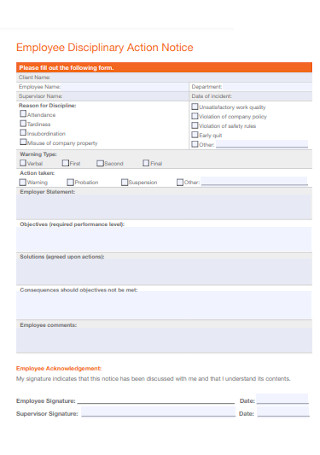
Employee Disciplinary Action Notice Form
download now -

Employee Disciplinary Warning Notice Action Form
download now -
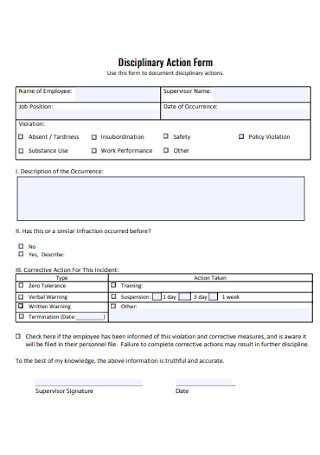
Employee Job Disciplinary Action Form
download now -

Formal Employee Disciplinary Action Form
download now -
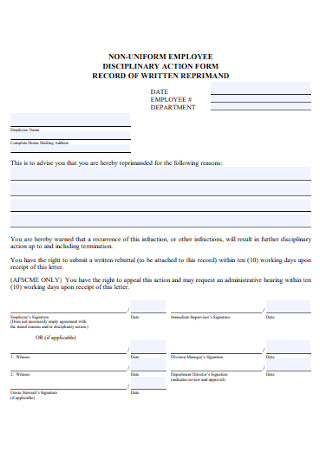
Non-Uniform Employee Disciplinary Action Form
download now -
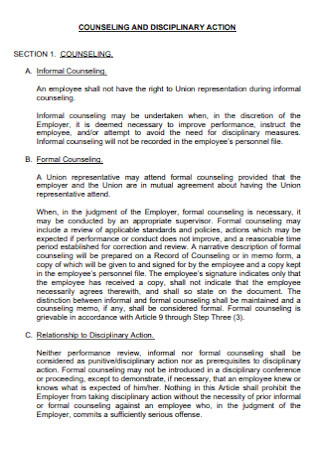
Counsiling and Employee Disciplinary Action Form
download now -
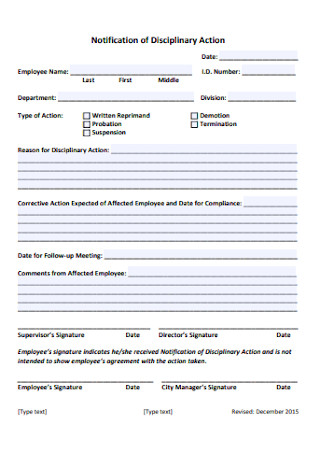
Notification of Disciplinary Action Form
download now -
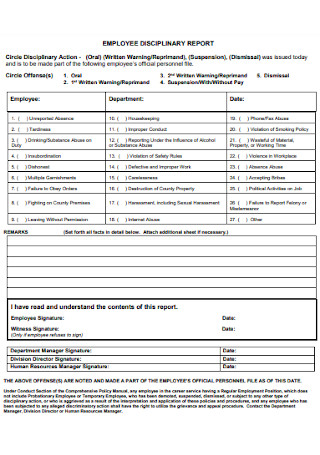
Employee Disciplinary Report Action Form
download now -
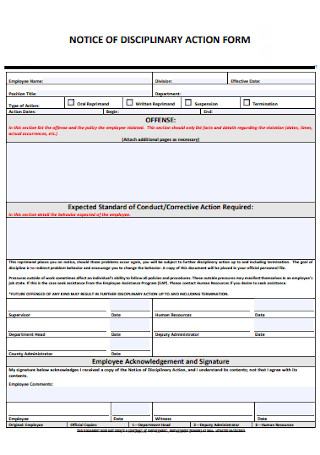
Standard Employee Disciplinary Action Form
download now -
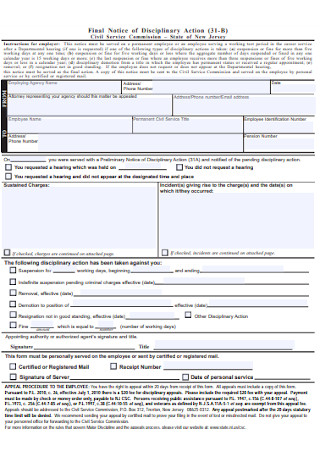
Final Notice of Employee Disciplinary Action Form
download now -
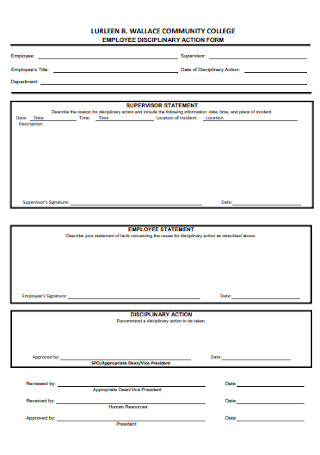
Community Employee Disciplinary Action Form
download now
FREE Employee Disciplinary Action Form s to Download
38+ Sample Employee Disciplinary Action Forms
What Is an Employee Disciplinary Action Form?
Components of Employee Disciplinary Action Forms
How to Create Employee Disciplinary Action Forms
Types of Disciplinary Actions
FAQs
How long does disciplinary action stay on record?
Are disciplinary actions considered confidential?
Will a disciplinary action be shown on a reference?
Aside from this, some issues go against the terms of the contract or the employee handbook. During these times, an employee disciplinary action form is an employer’s way to reach the employees. These are vital to any company and must follow according to company policy. Here is the information relating to employee disciplinary action forms, their nature, parts, and creation. Check out the article concerning the forms below to find out more.
What Is an Employee Disciplinary Action Form?
Employee disciplinary action forms inform employees about their inabilities to meet the terms of the contract and the actions the involved employee takes as a consequence of the violation. Before an employee disciplinary action form presents itself to the employee, it is necessary to exhaust all resources available in giving out warnings, counselings, and all forms of reprimand until there is no other option available. These forms document the violations made by the employee and ensure professional cooperation during the term of disciplinary actions and procedures. The warnings reduce employee turnover by assuring a well-defined description of steps to improve performance and clarify problems. When the worker completes the form, the employer issues a copy to the employee and keeps another for the employee’s file, providing the employer with a complete account of employee behavior.
The dissertation published by the University of Central Florida entitled “A Survey Of Progressive And Affirmative Employee Discipline Systems In Florida’s Hospital” published in 2015 shows that one hundred percent of employees believe that open communication ensures improved employee compliance. The data reveals the importance of communication between employees and employers in any organization.
Components of Employee Disciplinary Action Forms
Each disciplinary action form varies from company to company, and it depends on the format used. Despite this, several sections must reflect in the paper to have detailed information about the disciplinary procedure the employee will take. Here are the essential parts of an employee disciplinary action form.
How to Create Employee Disciplinary Action Forms
Employee disciplinary action forms vary in physical appearance but serve similar purposes. Completing the form is self-explanatory and must be completed to the best of your ability and with accuracy. Some sections are complicated to fill than others and require thorough investigation. Here are the steps to creating and filling out employee disciplinary action forms.
Step 1: Ensure Sufficient Warnings Are Given to the Employee
Writing an employee disciplinary action must be used only as a last resort. Do not write out an employee without giving sufficient warnings. Provide the employee fair chances to correct the unwanted behavior and ensure the employee is aware of the consequences following the behavior. By not giving the employee appropriate warnings, it causes a rift between the relationship of the employer and employee, and the employee can use it as grounds for legal action due to illegal termination.
Step 2: Classify the Type of Issue
It is essential to identify the type of issue the employee exhibits. If it involves behavioral problems, consider counseling services to address the issue. If the employee faces problems regarding workplace performance, analyze the reason behind the problem and offer necessary training and coaching. Different types of obstacles require various long-term solutions to help the employee throughout the stay with the company.
Step 3: Be Specific and Concise In Detailing the Incident
Ensure a direct approach in addressing the employee’s behavior and what needs to change; do not sugar coat the words. Be concise to alleviate the confusion or intent, and ensure that the meeting with the employee does not exceed more than a couple of minutes. Allowing the conversation to be longer will cause the employee to be defensive and restless.
Step 4: State Clear and Concrete Examples of the Changes
Before setting up the employee for writing, the human resources representative must present sufficient information to justify the disciplinary action. It is essential to record instances of the employee displaying situations of negative behavior and use them as examples for behavior that needs change. It also allows the representative to appear detached and objective when disciplining the employee and offers an outlet for professionalism in a situation where emotions are present.
Step 5: Provide Expected Improvements and Deadlines
Ensure the employee understands the consequences of improving their performance and behavior. Provide the employee a clear timeline of when to anticipate the behavior development, even if it is immediate. It is also essential to remind the employee of the consequences if they do not accomplish or implement the change.
Step 6: Provide an Official Agreement between the Employee
Never forget to make the agreement official by issuing written documentation. Have the employee sign the document and include it as an official report. It is a form of acknowledgment of the behavior change and the following consequences if there is no improvement in the behavior.
Types of Disciplinary Actions
Disciplinary actions take on many forms and are according to the gravity of the violation. Enforcing disciplinary actions are mandatory to maintain a positive and productive work environment.
FAQs
How long does disciplinary action stay on record?
Under the federal nondiscrimination laws, Title VII, Americans with Disabilities Act (ADA), and Age Discrimination in Employment Act (ADEA), the employer must maintain records about employment actions for at least one year from the date of the action. For employers that have federal contracts, they must keep documents relating to employment actions for at least two years upon the date of claim in the employee’s account. Corrective action documents support employment actions can become a permanent record in the personnel’s file. Employers find keeping these documents on file for an indefinite period attached to present employees because these provide employers with the employee’s history and overall job performance. If an employee maintains a certain level of behavior for more than a year, employers agree that past disciplinary actions no longer affect future decisions. Discarding these documents after a year enables employers not to correlate negative performances in the past with guiding future corrective actions relating to the employee. However, employers opt for warnings when handling employees with patterned behavioral issues. The disciplinary action on file helps organizations to determine the required action if the behaviors influence future performances. It is beneficial to consult a legal attorney before disposing of any employee disciplinary actions.
Are disciplinary actions considered confidential?
Confidentiality is one of the most significant aspects of human resources and is critical in certain situations, including workplace investigations and performance and disciplinary actions. It is still challenging when certain information needs disclosure and discussion between individuals involved in an inquiry or disciplinary development where all related data needs evaluation. In such situations, the human resources representative must deliver impartial decisions while maintaining the employees’ confidentiality and guaranteeing a meticulous investigation that is fair and just to all individuals and groups.
Will a disciplinary action be shown on a reference?
In transferring jobs or looking for a new vacant position, most employers ask for reference letters. It gives the employers an idea of how a particular employee faired during their stay with the previous employer. It details the employee’s past job position, performance, duties, and skills in performing the job description assigned to them. However, if the employee faced disciplinary action before leaving the company, it poses a complicated question. Will disciplinary actions appear in the reference letter or during an interview between the previous and hiring companies? Most HR personnel respond honestly about employment-related processes. The employer only discloses information about completed investigations or disciplinary actions. It is advisable to stay with the company until the completion of the process or examination, even if it results in dismissal. If the employee is innocent, the employer must not mention the disciplinary action in the reference. However, if the result equates to dismissal or any other disciplinary action, the previous employer must include it in the recommendation letter. It ensures a fair and objective evaluation of the employee’s performance.
Discipline is a trait that all people must possess. For work, daily activities, and other circumstances, it pays off to have the discipline to achieve goals. In the workplace, discipline plays a significant role in employee performance, productivity and behavior. It is also advisable to keep employees driven in work by providing means and activities that improve their skills. The employer and employee must work together to achieve a common goal and establish a positive relationship. In the words of Steven Pressfield, “We must do our work for its own sake, not for fortune or attention or applause.” Save the employee disciplinary action forms found in the article above.
